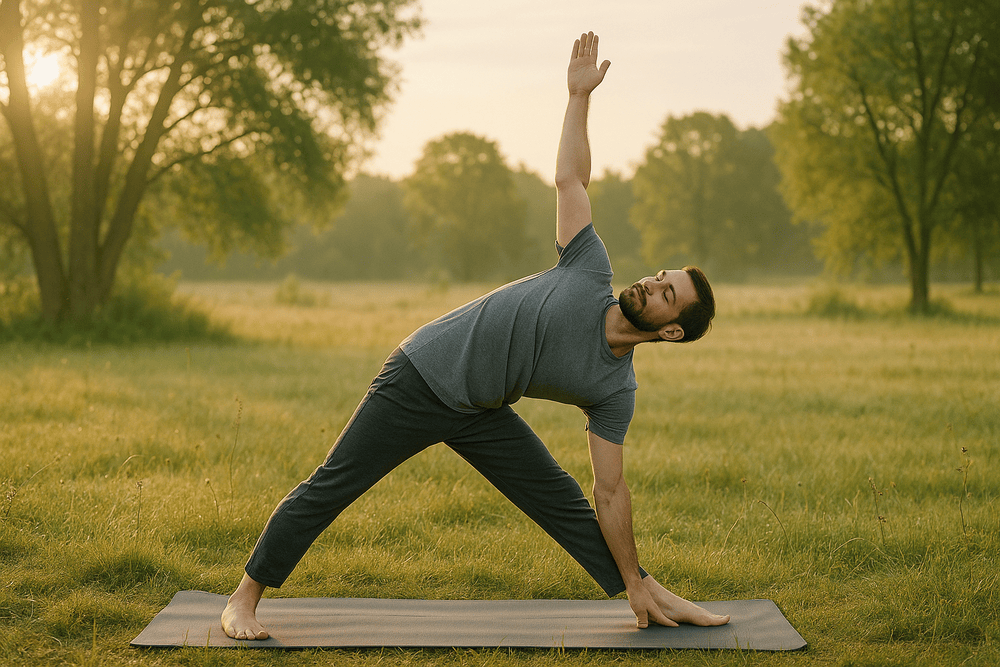Pilates vs Yoga Understanding the Differences and Choosing the Right Fit
Mia Santos
2025-09-19
6 min read

When it comes to fitness and wellness, two practices have stood the test of time as powerful paths to improved health and mindful living – Pilates and yoga. While both often share the same studio space and have loyal followers, they are distinct disciplines that cater to different needs and goals. If you're trying to decide which is right for you, understanding what makes them unique is the first step. This guide dives into their origins, practices, benefits, and differences, helping you make an informed choice tailored to your health and well-being goals.
A Look at the Origins of Pilates and Yoga
Before discussing their differences, it’s essential to understand where these practices come from and what they aim to achieve. While both Pilates and yoga focus on building strength, flexibility, and mental clarity, they do so using very different methods. Yoga is an ancient practice with roots spanning over 5,000 years. Originating in India, it combines physical postures (known as asanas), breathing techniques, meditation, and ethical principles. Yoga is a holistic approach to health, often aiming to unite mind, body, and spirit. Pilates, on the other hand, is a much newer discipline. Created in the early 20th century by Joseph Pilates, it was originally used as a rehabilitation method for injured soldiers and dancers. Pilates focuses on building core strength, improving posture, and enhancing overall body control.
What Happens in a Class
Attending a yoga class is often a sensory experience. You'll commonly find a serene, quiet atmosphere, with calming music and instructors guiding you through a series of poses. Depending on the style of yoga (e.g., Vinyasa, Hatha, or Bikram), the movements may be slow and restorative or dynamic and fast-paced. The primary focus in yoga often centers around connecting breath to movement, creating a sense of mindfulness and presence. Pilates classes are structured differently. They are generally more fitness-focused, with an emphasis on precise, controlled movements. Exercises are often centered around developing core strength, balance, and spinal alignment. While mat-based Pilates is common, some sessions use specialized equipment, like the Reformer machine, to enhance resistance and increase intensity.
The Physical and Mental Benefits
Both Pilates and yoga offer incredible payoffs for those who practice consistently. However, the benefits focus on different areas:
Pilates Benefits
Pilates is particularly effective for improving strength and stability, as it targets the body's core. Its carefully controlled movements help sculpt long, lean muscles and improve posture. It’s also an excellent choice for injury recovery, as its exercises are low-impact and can be modified based on individual capabilities.
Yoga Benefits
Yoga takes a more holistic approach, addressing both the physical and mental aspects of health. Physically, yoga can enhance flexibility, build both upper and lower body strength, and improve balance. On the mental side, yoga is well-known for reducing stress and promoting relaxation through mindfulness and breathwork. Many practitioners also report a deeper sense of spiritual connection through yoga.

Key Differences Between Pilates and Yoga
While both practices share commonalities, their differences are what make them unique choices depending on your needs:
1. Focus on the Body vs Mind
Pilates prioritizes body mechanics, focusing heavily on core strength and muscle engagement. Yoga, while also physically demanding, places greater emphasis on mental clarity and mindfulness.
2. Breathing Techniques
Yoga incorporates pranayama (breathing exercises) as an integral part of practice to promote relaxation and focus. Pilates also emphasizes breath, but in a way that coordinates with movement to support muscle engagement.
3. Use of Equipment
While yoga primarily uses mats, some props like blocks or straps may be introduced for assistance. Pilates often uses specialized equipment like Reformers, Cadillac machines, and stability balls to provide resistance and deepen muscle activation.
4. Goal Orientation
Yoga seeks harmony between the mind, body, and spirit, often extending beyond physical health to encompass moral and ethical teachings. Pilates, in contrast, focuses solely on physical fitness and rehabilitation. The decision between Pilates and yoga ultimately depends on your personal goals, fitness level, and lifestyle preferences.
• If you’re looking to improve flexibility, manage stress, or adopt a holistic practice, yoga may align best with your objectives. It’s a great way to foster mental well-being while improving physical health.
• On the other hand, if your primary goal is to build core strength, recover from an injury, or enhance posture and alignment, Pilates may better suit your needs.
It’s worth mentioning that many people choose to integrate both practices into their routines to reap the complementary benefits they offer. Choosing between Pilates and yoga doesn’t have to be an either-or decision. Each practice offers unique benefits, and together they can provide a balanced approach to fitness and wellness. Whether you're mastering a challenging Pilates sequence or flowing through a sun salutation in yoga, the focus is on finding what makes your body and mind feel strongest and most at ease.



